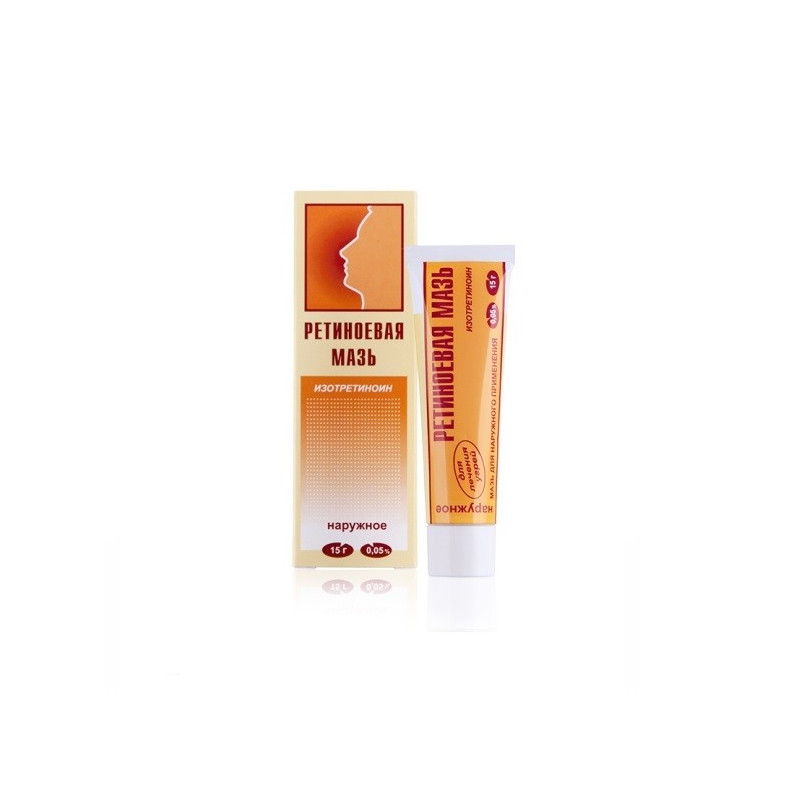



 All payments are encrypted via SSL
All payments are encrypted via SSL
 Full Refund if you haven't received your order
Full Refund if you haven't received your order
Acne Treatment
Remedy for the treatment of acne. It contributes to the normalization of the terminal differentiation of cells, inhibits the epithelial hyperproliferation of the excretory ducts of the sebaceous glands, the formation of detritus and facilitates its evacuation. Due to this, the production of sebum is reduced, its secretion is facilitated, the composition is normalized, the inflammatory reaction around the glands is reduced. When applied externally and systemically, it has antiseborrheic, sebiostatic, anti-inflammatory, kerato and immunomodulating effects; enhances the regeneration processes in the skin.
After ingestion isotretinoin is absorbed from the gastrointestinal tract, absorption may increase when taken with food. Cmax in blood plasma is achieved within 1-4 hours after ingestion.
Oral bioavailability is low, which may be due to parietal metabolism in the intestinal wall and the effect of "first passage" through the liver.
Isotretinoin is highly bound to plasma proteins. It is metabolized in the liver to form the main metabolite of 4-oxo-isotretinoin, and some isomerization of isotretinoin to tretinoin also occurs.
Isotretinoin, tretinoin and its metabolites undergo enterohepatic recirculation.
Final t1/2 tretinoin is 10-20 hours. An equivalent amount is determined in the feces, mostly unchanged, and in the urine in the form of metabolites.
For oral administration: severe forms of nodular cystic acne, especially with localization on the body.
For rectal use: severe recurrent forms of acne, rash with concomitant seborrheic process.
For external use: papulopustular acne, seborrhea, rosacea, perioral dermatitis.
Pregnancy, established and planned, lactation, hypersensitivity to isotretinoin, simultaneous use of Tetracycline antibiotics.
For oral administration: severe dysfunction of the liver and / or kidneys, hypervitaminosis A, significantly elevated plasma lipid levels, neoplasms.
For rectal use - diseases of the rectum.
Dermatologic: dry mucous membranes, skin rash, dermatitis, itching, cheilitis, erythema (especially on the face), sweating, palm-plantar peeling, paronychia, degeneration of nails, increased proliferation of granulation tissue in the affected area; rarely - thinning hair, vasculitis, photosensitivity.
Special senses: conjunctivitis, photophobia, decreased night vision, corneal clouding, hearing loss.
Nervous system: headache; rarely - depression, seizures, suicidal tendencies; in rare cases, intracranial hypertension.
Gastrointestinal: nausea; rarely - colitis, bleeding from the gastrointestinal tract, transient increase in liver transaminase activity; in rare cases - hepatitis.
Hemic and lymphatic: anemia, neutropenia, change in platelet count, increased ESR.
Metabolism: increasing the concentration of TG, glucose.
Musculoskeletal system: pain in muscles and joints; rarely - hyperostoses.
Other: nose bleed.
For rectal and external use: 1-2 weeks of treatment may cause new rashes, itching, swelling and redness of the skin.
Rectally and externally used with caution in diseases of the liver, kidney, chronic pancreatitis, cardiac decompensation, chronic intoxication (including alcohol).
With rectal and external use with a pronounced reaction of exacerbation (1-2 weeks of treatment), it is recommended to cancel treatment for a few days until it subsides, then therapy can be resumed.
If ingestion requires regular monitoring of liver function and plasma lipid levels before treatment, 1 month after the start of therapy, and then every 3 months.
For diabetes, obesity, alcoholism or lipid metabolism disorders, more frequent monitoring of laboratory parameters is recommended. With diabetes or suspected it is necessary to strictly control the level of glucose in plasma.
With prolonged use may develop symptoms of chronic hypervitaminosis A.
During the period of treatment or for some time after its termination it is impossible to be donors for women of childbearing age.
During therapy, patients should not be prescribed UV therapy, patients should avoid direct exposure to solar radiation.
In the process of treatment may occur intolerance to contact lenses.
The safety of use in children and patients of prepubertal age has not been established.
The simultaneous use of isotretinoin and derivatives of 19-nortestosterone should be avoided, especially in patients with gynecological / endocrinological diseases.
The simultaneous use of other drugs with keratolytic or exfoliative properties (including other retinoids), as well as Progesterone in microdoses (including mini pili preparations) is not recommended.
Rectal and externally used with caution in kidney disease.
Rectal and externally used with caution in liver diseases.
Isotretinoin has a pronounced teratogenic and embryotoxic effect.
Contraindicated in established and planned pregnancy.
Contraindicated during lactation.
The action of isotretinoin is attenuated with the simultaneous use of progesterone in microdoses.
With the simultaneous use of isotretinoin and vitamin A may increase toxic effects.
With simultaneous use of isotretinoin and aminoglycoside antibiotics, there is a risk of developing intracranial hypertension.
For oral administration, the initial dose is 500 mg / kg / day; the maximum daily dose is applied for a limited time and is 1 mg / kg; maintenance dose - 0.1-1mg / kg / day; the duration of treatment is 16 weeks, the repeated course is carried out with an interval of 8 days. Accepted with meals in 1 or more receptions.
Rectal - 0.5-1 mg / kg 1 time / day at night (in the supine position); the course of treatment is 8-12 weeks, the intervals between courses are 1-2 months.
Ointment is applied with a thin layer to the affected skin 2 times / day. The duration of treatment is 4-6 weeks.
